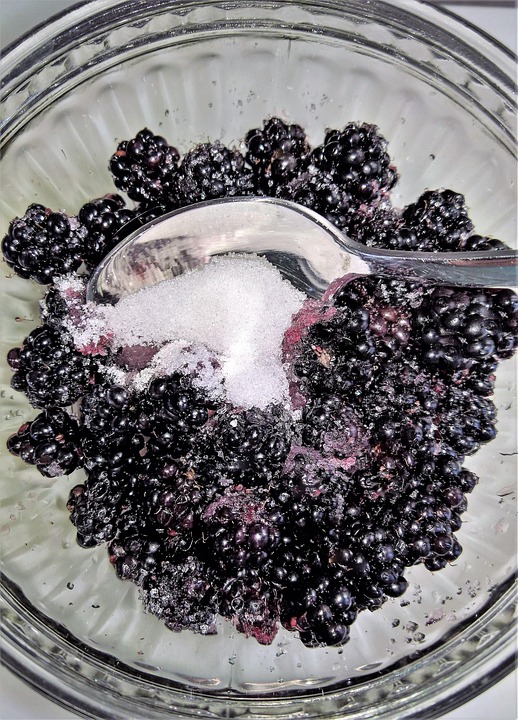Challenges and Solutions in Compote Supply Chain and Cold Storage
Introduction
The compote industry is a vital part of the food processing sector, providing consumers with convenient and nutritious fruit products. However, like any other industry, the compote supply chain faces various challenges that need to be addressed for smooth operations. In this report, we will discuss some of the key challenges faced by the compote supply chain and cold storage facilities, along with potential solutions to overcome them.
Challenges in Compote Supply Chain
One of the primary challenges in the compote supply chain is the perishable nature of fruits. Fruits used in compote production have a limited shelf life, requiring careful handling and storage to prevent spoilage. This can lead to significant losses if not managed properly. Additionally, fluctuations in fruit availability due to seasonal variations can impact production schedules, leading to supply chain disruptions.
Another challenge faced by compote manufacturers is maintaining product quality and consistency. The quality of fruits used in compote production directly impacts the final product’s taste and nutritional value. Ensuring consistent quality can be challenging, especially when sourcing fruits from different suppliers with varying standards.
Furthermore, transportation and logistics pose a challenge in the compote supply chain. Ensuring timely delivery of raw materials to processing facilities and finished products to distribution centers requires efficient logistics management. Delays in transportation can lead to product spoilage and increased costs.
Solutions to Compote Supply Chain Challenges
To address the perishable nature of fruits, compote manufacturers can invest in cold storage facilities. Cold storage helps prolong the shelf life of fruits, ensuring they remain fresh until they are processed. Implementing proper cold chain management practices can help reduce spoilage and maintain product quality.
For managing fruit availability fluctuations, compote manufacturers can work closely with fruit suppliers to establish long-term contracts. By planning ahead and securing a stable supply of fruits, manufacturers can better manage production schedules and prevent disruptions in the supply chain.
To maintain product quality and consistency, compote manufacturers can implement quality assurance programs and standards. This includes regular testing of raw materials, monitoring production processes, and conducting quality checks on finished products. By adhering to strict quality control measures, manufacturers can ensure that their products meet consumer expectations.
Efficient transportation and logistics management can be achieved through the use of technology such as GPS tracking and route optimization software. This allows manufacturers to track shipments in real-time, identify potential delays, and reroute deliveries to ensure on-time arrival. By streamlining transportation processes, manufacturers can reduce costs and improve overall supply chain efficiency.
Challenges in Cold Storage Facilities
Cold storage facilities play a crucial role in the compote supply chain by providing a controlled environment for storing perishable goods. However, these facilities face challenges such as energy costs, maintenance, and capacity constraints. High energy costs can significantly impact operating expenses, especially for facilities that require constant refrigeration to maintain optimal storage conditions.
Maintenance of cold storage facilities is another challenge, as equipment such as refrigeration units and temperature controls require regular servicing to ensure efficient operation. Failure to maintain equipment can lead to breakdowns, temperature fluctuations, and spoilage of stored goods.
Capacity constraints in cold storage facilities can also pose a challenge, especially during peak production periods when demand for storage space is high. Insufficient capacity can lead to overcrowding, improper storage practices, and decreased efficiency in managing inventory.
Solutions to Cold Storage Challenges
To address high energy costs, cold storage facilities can invest in energy-efficient equipment and technologies. This includes upgrading to energy-efficient refrigeration units, installing LED lighting, and implementing temperature control systems that optimize energy consumption. By reducing energy usage, facilities can lower operating costs and improve sustainability.
Regular maintenance of cold storage equipment is essential to ensure smooth operations. Facilities should implement preventive maintenance programs to inspect and service equipment on a scheduled basis. This helps identify potential issues early on, prevent breakdowns, and extend the lifespan of equipment.
To overcome capacity constraints, cold storage facilities can consider expanding existing facilities or investing in additional storage space. This may involve constructing new storage units, installing racking systems to maximize storage capacity, or outsourcing storage to third-party providers during peak periods. By increasing storage capacity, facilities can better meet demand and improve inventory management.
In conclusion, the compote supply chain and cold storage facilities face various challenges that require proactive solutions to ensure efficient operations. By addressing issues such as perishability of fruits, product quality, transportation logistics, energy costs, maintenance, and capacity constraints, compote manufacturers and cold storage facilities can optimize their operations and deliver high-quality products to consumers. Implementing the right strategies and technologies is key to overcoming these challenges and thriving in the competitive compote industry.




